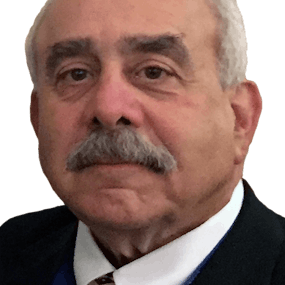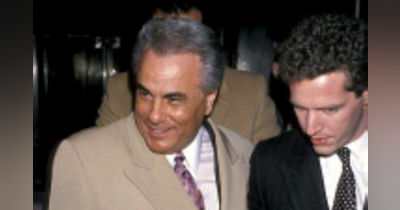Regardless of your age, the name Sherlock Holmes immediately conjures up images of an old-world detective complete with hat and pipe, and a mastery of observation, deduction, forensic science, and logical reasoning. While this fictional character first appeared in print in 1887, his popularity quickly spread throughout the world. Today, there are thousands upon thousands of stage adaptions, films, television productions and publications about this arguably best-known detective. In fact, the Guinness World Records lists Sherlock Holmes as the most portrayed character in history. But did you know that Mycroft Holmes actually surpassed the deduction abilities and knowledge of his younger brother Sherlock?
In the Adventure of the Bruce-Partington Plans, Sir Arthur Conan Doyle wrote this about Mycroft:
"Well, his position is unique. He has made it for himself. There has never been anything like it before, nor will be again. He has the tidiest and most orderly brain, with the greatest capacity for storing facts, of any man living. The same great powers which I have turned to the detection of crime he has used for this particular business. The conclusions of every department are passed to him, and he is the central exchange, the clearinghouse, which makes out the balance. All other men are specialists, but his specialism is omniscience.”
Fusion Centers
In the wake of the tragic events of September 11, 2001, several states began to stand up early versions of fusion centers in an effort to share information related to counterterrorism efforts. Shortly thereafter, in January of 2005, recognizing the value in collaboration among federal, state, and local public safety officials, the National Governor’s Association (NGA) Center for Best Practices ranked the development of a state intelligence fusion center as its second-highest priority for that year. It was the NGA’s stance that served as the catalyst for the implementation and development of fusion centers by driving the publication of the U.S. Department of Justice’s Global Justice Information Sharing Initiative’s Fusion Center Guidelines: Developing and Sharing Information and Intelligence in a New Era.
Fusion centers have evolved exponentially since their early days when their numbers were few and their mission was narrow. Today, they currently hover around 80 centers across the United States, Guam, Virgin Islands, and Puerto Rico. The collective mission of the national fusion center network, as well as the mission sets of individual centers – at the state and major urban areas - are as diverse as one would expect when truly assessing the myriad of threats that face hometowns daily. While they continue to maintain an unblinking eye on the terror threat picture, they have developed capacities to address violent crime, natural disasters, special event planning, fentanyl poisonings, and pandemic flu to name a few. As Mike Sena, the President of the National Fusion Center Association, recently told me, “when it comes to fusion centers, there was no road map but off we went building relationships along the way.” Those relationships eventually translated into greater intelligence and analytical capacities and enhanced information-sharing platforms that law enforcement, counter terrorism, and public safety professionals rely upon today to advance their missions.
The Mycroft Effect and Fusion
So, what does a fictional old-world character and fusion centers have in common and what do they mean for advancing public safety today? Sir Doyle described Mycroft as a “central exchange,” a “clearing house,” and “omniscient.” Those are the same qualities that in my own mind’s eye I use to visualize fusion centers. Sir Doyle also explained that Mycroft was first used as a short-cut, a convenience, and then made himself essential. He further added, “in that great brain of his everything is pigeon-holed and can be handed out in an instant.” While Mycroft may have been imagined, the makings of fusion centers – that share the same qualities of this great analyst - are real and critically important to the safety and security of America.
This past September marked 20 years since that fateful day when four planes converted into guided missiles by international terrorists slammed into New York, Washington DC, and Pennsylvania snuffing out the lives of nearly 3,000 souls. There is always concern that the further we move away from that fateful day the easier may be to forget the importance of information-sharing, collaboration, and readiness prevention. Yet, while there may be sound reasons for that concern, there is also good reason to be hopeful. As we look across the fusion center network and see hundreds of men and women who every day in unison embody the spirit of Mycroft to become the clearing houses for information needed to detect terror, fight violent crime, and assess the undulating threat environment we give pause.
Conclusion
If Sir Doyle was alive today, he would marvel at how something that started as an outgrowth to fill a need for information-sharing in the months after the terrorist attacks has evolved into a critical homeland security and crime control component for state and local environments. He would recognize how fusion really is the sum of dedicated people, policy driven processes, and layered technologies. He may even have written,
Well, their position is certainly unique. Those that staff fusion centers made it for themselves. There has never been anything like it before, and they hope to sustain it into the future. Their budgets are the tidiest and their analytical capacities most orderly, with the greatest capacity for collecting, analyzing and sharing information across governmental entities. The same great powers which many have turned to for the detection of terrorism and crime are now used to address the myriad of threats that face America. Information and intelligence available through the law enforcement and homelands security community are passed to the fusion centers, and as a central exchange, a clearinghouse, they have become specialists in omniscience which is vital to the safety and security of the United States.
Fusion centers continue to be an integral component to keeping America safe. Support for them translates into greater capabilities vitally needed to advance public safety.




